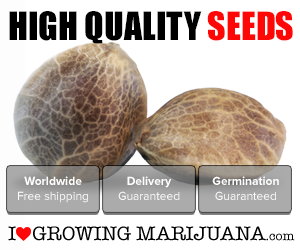Cannabis retail marketing must be heavily researched to best catch the eye of potential customers, especially in markets where there is a lot of competition. New Frontier Data provides a fascinating look behind the scenes at what brand packaging says about a product, and how it is perceived by consumers. New Frontier Data uses information collected and published in its recently published Cannabis Consumers in America report, which identifies consumers based on their purchasing behavior and trends in the industry (categorized as Savvy Connoisseurs, Contemporary Lifestylers, Legacy Lifestylers, Medical Lifestylers, Modern Medicinals, Engaged Explorers, Social Nibblers, Holistic Healers, and Infrequent Partakers.)
Fifty-one percent of consumers choose products based on the desired effect, such as sleep, energy, chill or create. While potency is also a contributing factor, New Frontier Data’s newest report explored the end result of popular brand packaging appearances, and shared which ones people tend to prefer the most.
For this product survey, participants were asked if they seek out flower from particular brands or companies: 43% answered “sometimes,” 21% said “always,” 19% said “rarely,” and 17% answered “never.” Overall, 28% added that branding and packaging is “very or extremely important” when considering what to buy.
Six image varieties of flower packaging, with percentages of consumers who most preferred those packaging themes: Black Minimalist Jar (7%), Gold Jar (9%), Craft Paper Jar (14%) Mountain Landscape Jar (16%), Hippie Colorful Jar (17%), and Prescription White Jar (36%).
The Black Minimalist Jar is described as a common choice between a variety of age groups, but often chosen because it was “cool, modern, and masculine.” Those who preferred this jar usually spend between $50-$199 per transaction and are more likely to consume cannabis every day.
The Gold Jar was most popular with consumers over 55, describing it as “cool, natural, or modern.” Some described it as feminine, but it was slightly more preferred by men. Those who were drawn to this jar usually purchase between 3.5 grams to 14 grams per month, and tend to purchase about $50-$99 in a single purchase. This particular consumer is also more likely to consider topicals or transdermal products as their favorite.
The Craft Paper Jar featured a simple brown exterior with black text, which attracted consumers who like to consume cannabis in a social setting because it is “natural, authentic, and cool.” Those who are drawn to this packaging tend to buy $20-$99 worth of product in a single purchase.
The Mountain Landscape Jar attracted younger consumers because it was “cool, natural, and authentic.” They were also the customers most likely to choose vaping as their primary way to consume.
The Hippie Colorful Jar was the most colorful of the bunch, which attracted medical cannabis consumers more than adult-use consumers, describing the jar as “cool, authentic, and modern.” Sixty-four percent of these consumers usually spend between $20-$99 in a single purchase, and prefer edibles over other consumption methods.
Finally, the Prescription White Jar was the most popular of all of these designs, appealing to all age groups and consumer types for its “medicinal, authentic, and natural” approach to design. Those who chose this tend to purchase more than one ounce of cannabis every month, and favored flower over all other product types.
New Frontier Data cites Harvard Professor Gerald Zaltman, an expert on marketing who is also a co-founder of consultant firm Olson Zaltman Associates, which has worked with some of the world’s largest brands. According to Zaltman’s book How Customers Think: Essential Insights into the Mind of the Market, 95% of purchasing decisions are subconscious, and 93% of people will “rely on visual cues when considering new products.”
With this in mind, New Frontier Data recommends a continued thoughtfulness when companies create their brand product identity. “As consumers become increasingly diverse and delineated in both their motives and methods for consumption, brands should aim to directly articulate how a given product suits a consumer’s goals, rather than settle simply for selling flower.
Read the full article here








